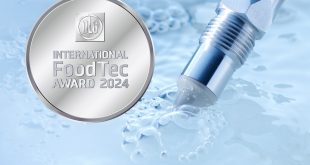UC San Diego engineers have developed practical strategies for building coordinated sensor-laden balloons for persistent, in-situ, real time measurements of developing hurricanes.
Using onboard GPS and mobile phone-grade sensors, each drifting balloon becomes part of a “swarm” of robotic vehicles, which can periodically report, their position, the local temperature, pressure, humidity and wind velocity.
The researchers say this new strategy has the potential to greatly improve efforts to estimate and forecast the intensity and track of future hurricanes in real time.
Current two to five day forecasts of many hurricanes deviate significantly from each other. Thomas Bewley, a professor at the Jacobs School of Engineering at UC San Diego, explained that Improved forecasts, to be greatly facilitated by improved in situ environmental sampling, are essential to protect property and save lives from such extreme environmental threats.
The model for large-scale coordination of balloon swarms within hurricanes uses a clever strategy to model predictive control by leveraging the cutting-edge Weather Research and Forecasting (WRF) code developed by the National Centre for Atmospheric Research, the National Oceanic and Atmospheric Administration and the Air Force Weather Agency (AFWA). Multiple simulations indicate the remarkable effectiveness of this approach, including a simulation based on the evolution of Hurricane Katrina as it moved across the Gulf of Mexico.
“The key idea of our large-scale balloon coordination strategy,” said Bewley, “is to `go with the flow’, commanding small vertical movements of the balloons and leveraging the strong vertical stratification of the horizontal winds within the hurricane to distribute the balloons in the desired fashion horizontally.”
Intermediate-scale and small-scale fluctuations in the violent turbulent flow of a hurricane, which are unresolved by forecasting codes like WRF, are quite substantial. The researchers’ strategy is to ‘ride out’ the smaller-scale fluctuations of the flow, modelling these fluctuations statistically, and responding with corrections only if a balloon deviates too far from its desired location in the formation.”
The researchers’ strategy for applying such corrections, dubbed Three Level Control (and endearingly abbreviated TLC), applies a finite shift to the vertical location of the displaced balloon for a short period of time, again leveraging the strong vertical stratification of the horizontal winds to return the balloon to its nominal desired location.
Another aspect of the project is the design of small (about 3 kg), robust, energetically-efficient, buoyancy-controlled balloons that can survive, without significant accumulation of ice, in the cold, wet, turbulent, electrically active environment of a hurricane. The balloons can operate effectively for up to a week at a time on a battery charge not much larger than that of a handful of mobile phones. “Cellphone-grade technologies, for both environmental sensors as well as low-energy radios and microprocessors, coupled with new space-grade balloon technology developed by Thin Red Line Aerospace, are on the cusp of making this ambitious robotic sensing mission feasible,” said Bewley.
The researchers are now working towards testing the balloons and algorithms designed in this study in the real world. With sensor balloon swarms and the special TLC coming out of their lab, fire and safety officials may soon have a crucial extra couple of days to prepare emergency responses.
 Instrumentation Monthly Test | Measurement | Control
Instrumentation Monthly Test | Measurement | Control




